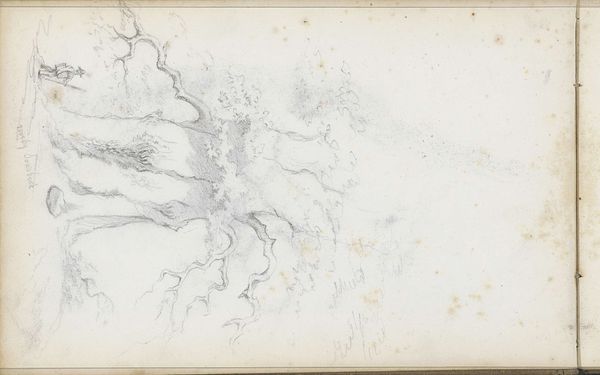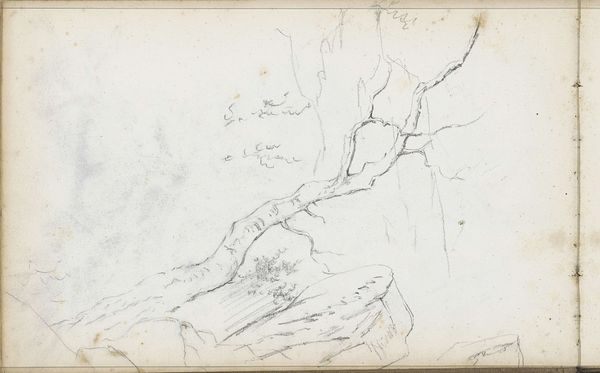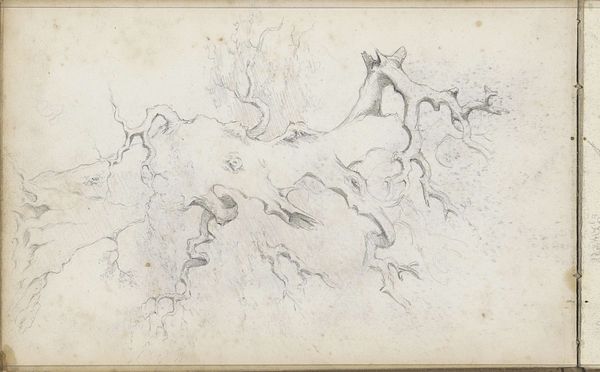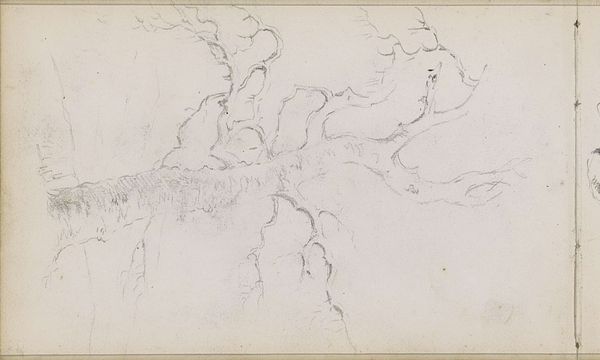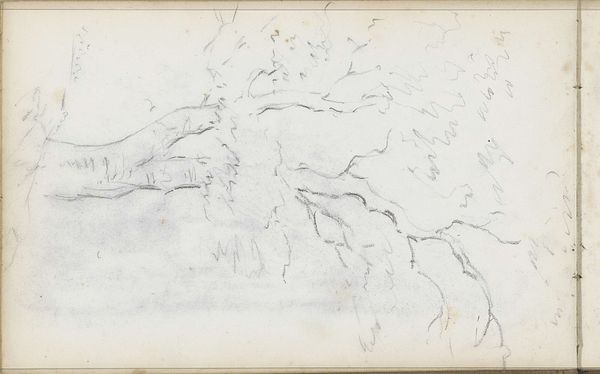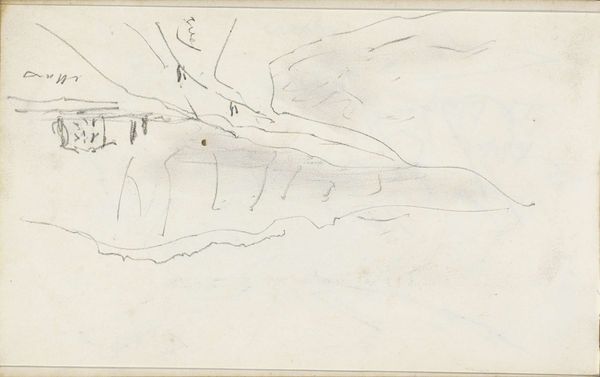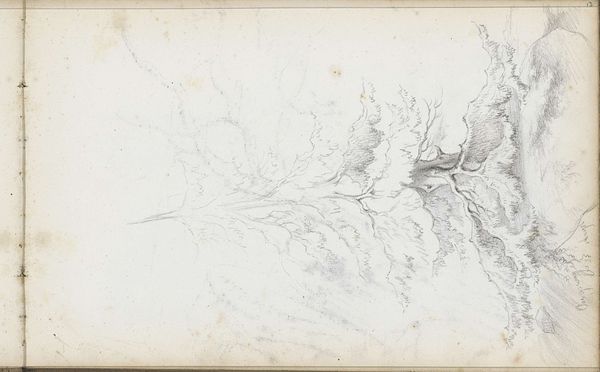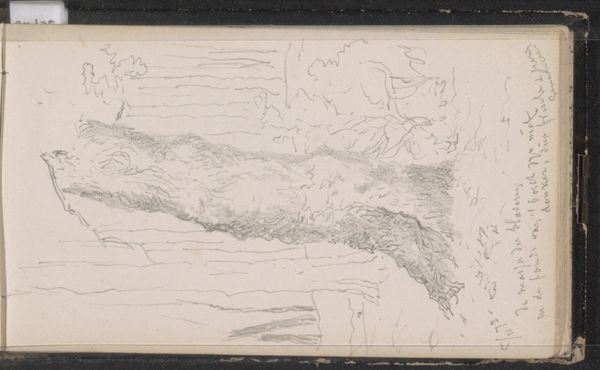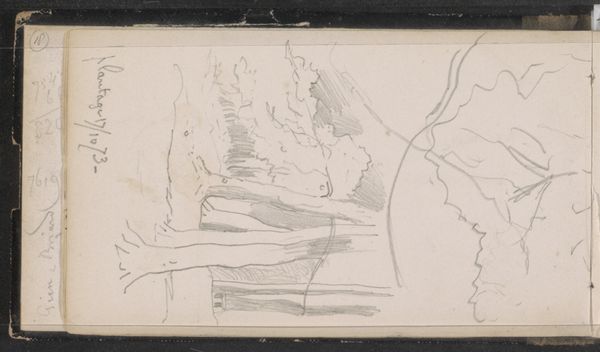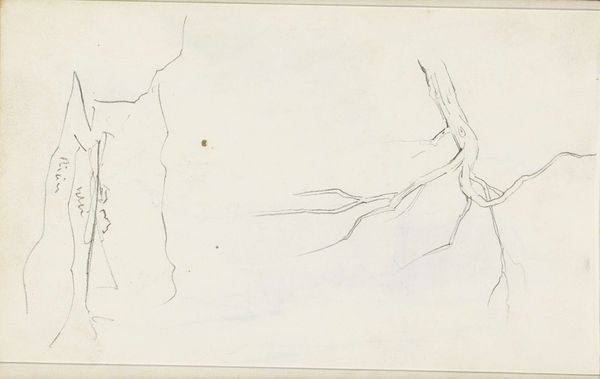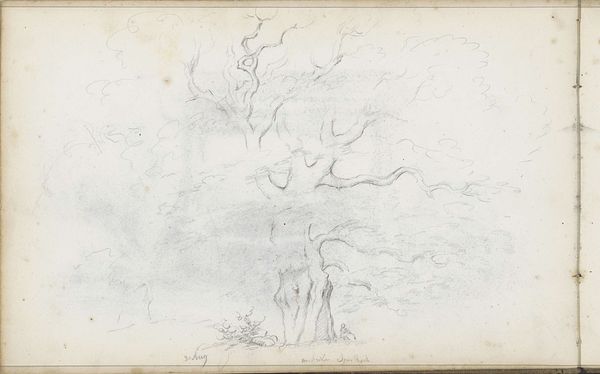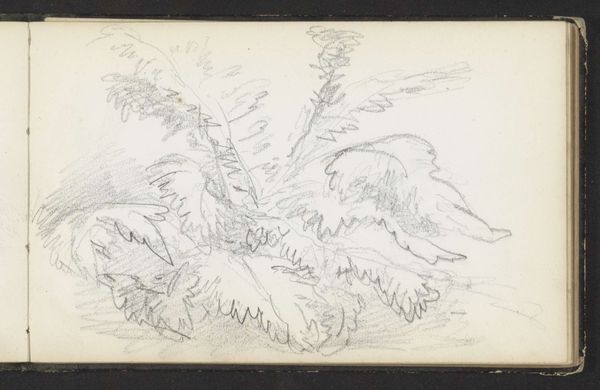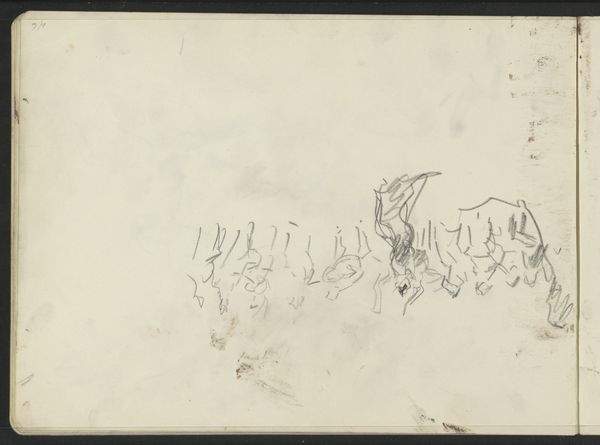
drawing, pencil
#
tree
#
drawing
#
aged paper
#
toned paper
#
light pencil work
#
pencil sketch
#
incomplete sketchy
#
landscape
#
personal sketchbook
#
underpainting
#
sketch
#
pencil
#
line
#
watercolour illustration
#
sketchbook art
#
watercolor
#
realism
Dimensions: height 184 mm, width 282 mm
Copyright: Rijks Museum: Open Domain
Curator: Here we have "Boomstam op de weg tussen Schelm en Kattenberg," a work made between 1874 and 1878 by Willem Cornelis Rip. Editor: It feels ephemeral, unfinished even. The light pencil work and toned paper create a muted, almost ghostly atmosphere. The starkness focuses the viewer entirely on the stark geometry of the subject. Curator: Right, this sketch is part of Rip's larger exploration of the Dutch landscape. I believe this unfinished quality underscores the realities of labor and nature itself, reflecting on themes of disruption and the obstacles encountered in everyday life within the fraught relationship between the natural world and industrializing forces of the time. Editor: That’s a compelling reading. Yet, for me, the interplay of lines takes precedence. Look how the stark, dead tree cuts through space; it creates an interesting tension, how the branching pattern reaches into the void of the aged paper. The pencil work here is rather skillful; it may appear effortless, but it creates a unique semiotic system of representation. Curator: I'd argue that viewing the sketch solely through the lens of line and composition overlooks its broader social context. Rip wasn't merely interested in aesthetic qualities. Think about land ownership and the use of resources during this period. This "roadblock", visualized through the image of the fallen tree trunk becomes more than a depiction, but rather a metaphor for systemic obstructions placed on ordinary citizens' lives, doesn’t it? Editor: Perhaps, but this overburdens the image with meaning external to itself. What if the obstruction isn't a social commentary but merely an observation about nature, an engagement with realism? We often disregard how artists, like scientists, sought new modes of observation through close examination, and sketching offered that option. Curator: It's more complex than just observing; by focusing on the road being obstructed by this particular tree trunk, the work provokes discussions around class, accessibility and perhaps also raises ecological questions which were indeed coming to the foreground as Rip was active. Editor: Well, whether read through semiotics or social criticism, this sketch gives us something to chew on. Curator: Absolutely, it makes us see beyond the immediate beauty of a landscape to reflect on what's hidden within the picture.
Comments
No comments
Be the first to comment and join the conversation on the ultimate creative platform.
